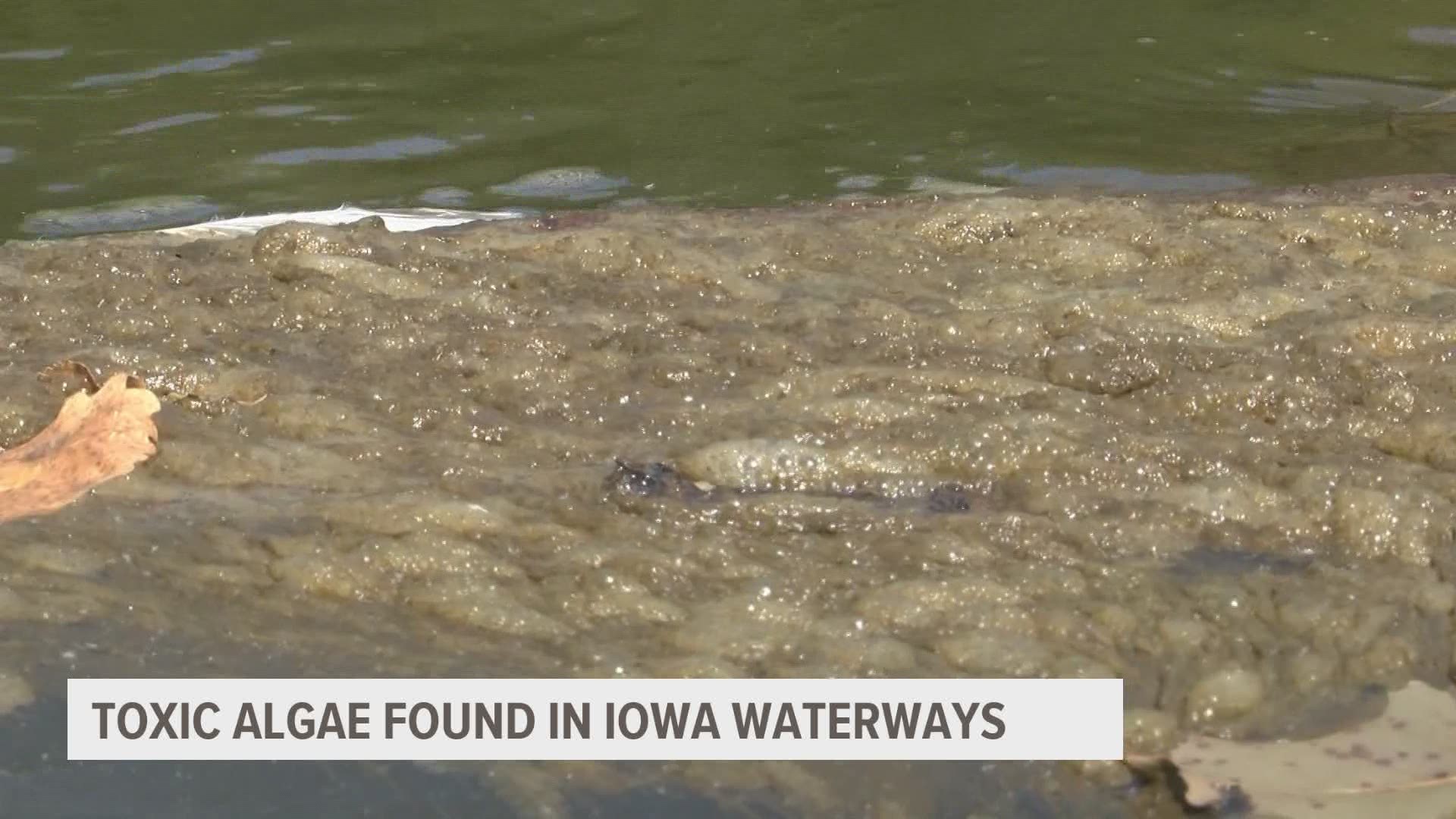DES MOINES, Iowa — Des Moines Water Works continues to keep an eye on water conditions at Saylorville Reservoir where patches of toxic blue-green algae have grown.
Saylorville Reservoir spills into the Des Moines River, which is one of two river sources for drinking water for 500,000 people in central Iowa. The algae found there can be toxic to humans and pets.
While fishing with his grandson at the lake, Fred Hofferber said he sees algae every year.
“I have noticed some today in a couple of spots in the corner where it’s washed up," said Hofferber. "It’s kind of a yucky-looking thing. It looks like it might be blue-green.”
DMWW employees test the waters daily for potential toxins.
"Every morning we will come and take a sample to check it. Sometimes will do multiple times a day,” Kyle Danley, chief operating officer of DMWW.
Danley said in 2019 and 2020 toxin levels in the Des Moines River lasted over 100 days. This year, levels increased, and Danley said he believes the next two months are crucial.
So, how can you tell if the water is toxic?
Using a clear bottle will help. Gather some water and see if it has a green or murky tint to it. The greener or murkier the water is, the more likely it is to be toxic.
Now, DMWW has started looking for other sourced waters that have lower-level nitrate contaminates.
“So we are doing a study to install several shallow wells that could supplement water and take groundwater surfaces that would not have levels of toxins in them," explained Danley.
That project would cost around $30 million.

